Can you identify your prospect’s preferred communication style? How does using DISC Profiles in selling make you more successful?
Sales professionals are well-trained in techniques such as prospecting and closing a deal. Regardless of how successful you already are, you can continue to develop skills that improve your sales interactions. One way is by focusing on DISC profiles in selling.
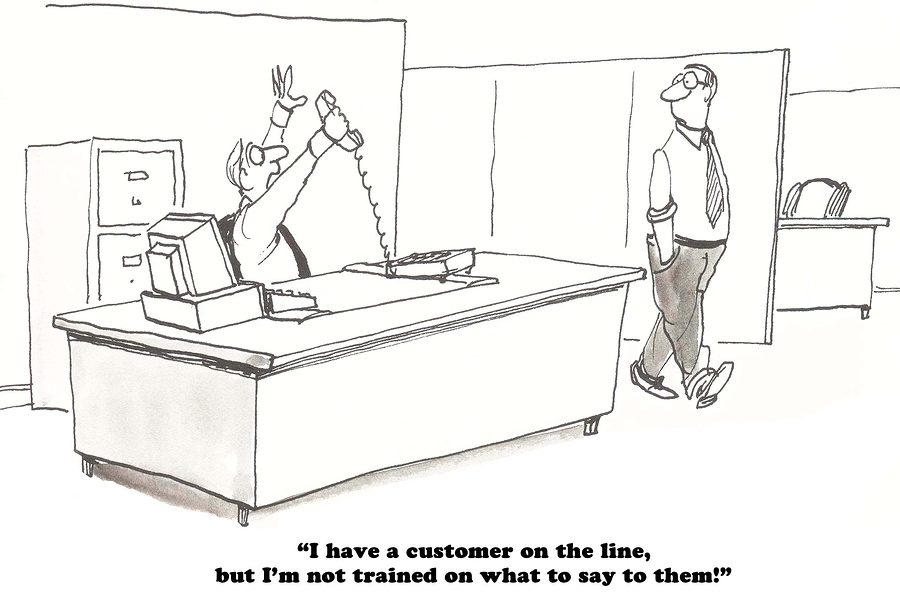
Why use DISC profiles in selling?
DISC profiles can help us better understand our preferred way to interact, but how can we focus on DISC profiles in selling? We need skills that help build rapport, quickly understand and communicate with our clients and prospects at a level they are engaged and comfortable. Thus, they are more likely to listen to us and close the deal. We can use the DISC tool to enhance our skills.
The DISC report provides supporting information about the different DISC styles and the person’s DISC profile. In addition, there are specific tips on how to better interact with others. There are different types of DISC Sales Reports including ones for the sales professional, the sales manager, and the sales candidate. When you view the sales reports usage it’s obvious that, along with leadership, it’s one of the most popular content areas.
Sales is a competitive sport
Selling is a highly competitive field. The competitiveness is often more critical and pronounced than any other field. Sales professionals are constantly looking for a competitive advantage. When calling on a prospect you may only have once chance to move the sales process forward. If you don’t do well then the sales process is over and your competitor will come in and close the deal. Therefore, companies are wisely investing money and resources into developing their sales people.
Have you ever thought of comparing sales to sports? The sales person needs ongoing training and coaching to improve skills and level of play. Other sales people are doing everything they can to improve their techniques and skills to get ahead of you and win. Consider developing your skills with a professional or coach; just like an athlete. Selling is like a competitive sport.
DISC is an important tool for sales professional
 People often times fall into the sales profession. As college students, we are often trained in marketing, accounting, and business, but we have less or no emphasis on sales skills. Sales is a profession, just like a medicine. We expect our doctor to stay current and up-to-date; otherwise we would choose another doctor. We need the same professionalism for sales people. Sales professionals need to continually improve and stay on top of their game.
People often times fall into the sales profession. As college students, we are often trained in marketing, accounting, and business, but we have less or no emphasis on sales skills. Sales is a profession, just like a medicine. We expect our doctor to stay current and up-to-date; otherwise we would choose another doctor. We need the same professionalism for sales people. Sales professionals need to continually improve and stay on top of their game.
When we talk about using DISC in selling we need to recognize that DISC is just one aspect of becoming a better sales person. DISC is a critical tool for sales people to have in order to understand who their prospects are and how they sell.
Simple steps to incorporate DISC profiles into selling
DISC explains how we do things. When we talk in terms of selling, DISC helps explain how we sell. Once you understand the basics of DISC you can apply it in all areas of communication. These are the same 4 steps to effective communication that we focus on in any interaction, but we reframe it into the context of selling. Our clients like the ease in which we can transition this model to all aspects of communication.
The first step is to understand that there are different behavioral styles of prospects and clients. We cannot use the same selling style for everyone and be successful every time. The second step is to have a clear understanding of our own DISC selling style. Our style affects how we sell so we need to have a confident self-awareness. In addition to knowing our sales style, we also need to identify our least comfortable sales style. For example, if C-style is your least comfortable style then meeting a C-style prospect will be the most challenging and take the most energy from you. You will need to be laser-focused and at the top of your game.
Next is the third step, which is to identify the style of your prospect. Finally, the most important and fourth step is to knowing how adjust your selling style to close the deal. Remember, anytime we are modifying our behavior we will need to prepare and practice.
Enemies of Behavioral Modification
One of the greatest challenges that sales people face is pressure. The sales person feels the need to make a good impression and close the sale. Thus, the pressure increases. When you feel pressured then it becomes more difficult to modify your behavior. Whenever we feel any kind of strong emotions they will divert us from being present and mindful of how we are behaving. Strong emotions, including pressure, are the enemies of behavioral modification.
The main objective to combat pressure is to understand how we tend to show up under pressure, think of better ways in which we can modify our behavior, and then practice. We need to practice, practice, and keep practicing.
Assumptions and auto-piloting
Sales people make often assumptions too quickly or or make general assumptions that can get them in trouble. For example, when we are meeting an engineer we may assume we are meeting a C-style prospect. While it’s true we find many engineers who are C-styles, but there are many of them are not. Don’t assume.
Another assumption is that people make buying decisions the same way we make buying decisions. However, people have different ways of making buying decisions. You need more information and observation before you can make decisions about your prospects.
We must avoid auto-piloting our behavior. Sales people have comfortable ways of doing things, but those ways won’t work with every prospect. We have to get out of our comfort zone. All of this awareness takes discipline, preparation, and practice. In long-term work relationships we have the opportunity to fix things when something goes wrong. However, when we are selling to a prospect we often have one chance, and one chance only.
Identifying the Prospect’s DISC Style
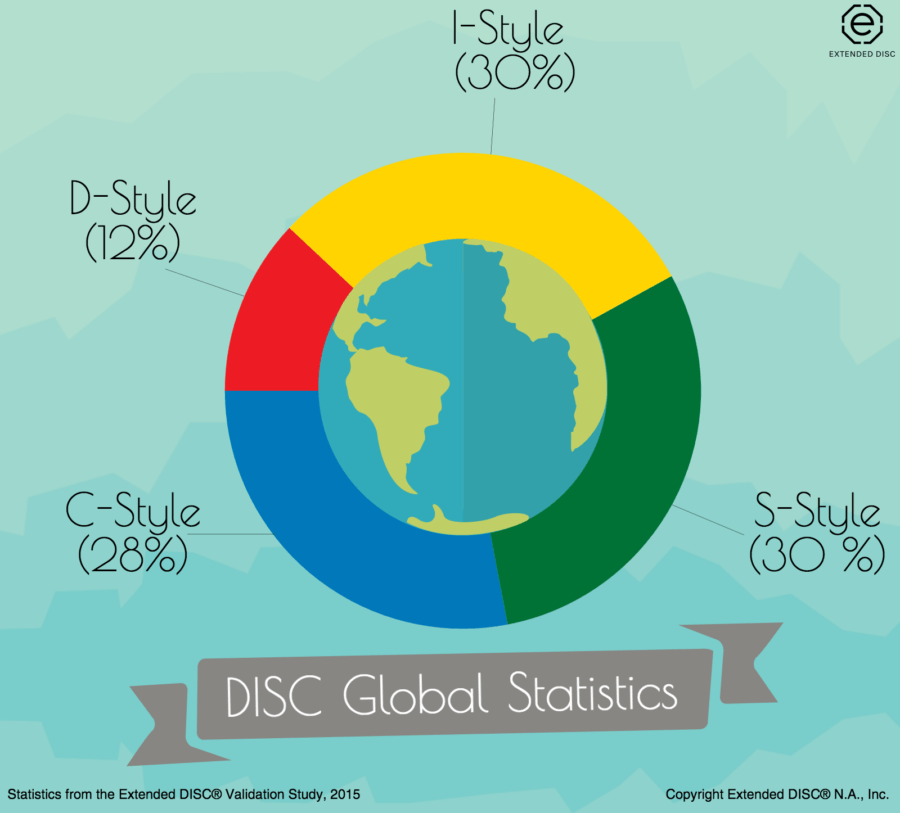 DISC prospects are not the same. The DISC Global Statistics infographic shows overall distribution of DISC profiles. Let’s say you are an I-style. If you sell only within your I-style comfort zone then you should be successful approximately 30% of the time. However, you may be leaving out 70% potential prospects. Leave your comfort zone and increase your potential prospects.
DISC prospects are not the same. The DISC Global Statistics infographic shows overall distribution of DISC profiles. Let’s say you are an I-style. If you sell only within your I-style comfort zone then you should be successful approximately 30% of the time. However, you may be leaving out 70% potential prospects. Leave your comfort zone and increase your potential prospects.
When identifying your prospect’s DISC profile first look for consistent patterns of behaviors. What do they tend to about? How do they say things? You can observe their body language. Listen to their tonality. You need to recognize that the prospect is also feeling pressure, especially when the buying decision is the more expensive and important. When your prospect feels pressure, then you are more likely to be observing their natural style. Try and get the prospect out of their office or familiar space. You will find it easier to identify their natural style because they are not in their comfort zone and less likely to be able to modify their style.
Now that you have observed their behaviors, you can assess their primary DISC style. Are they more task-oriented or people-oriented? Are they more reserved or active? People are more likely to be a combination of styles which means they are comfortable with more styles. Another way to describe that is that there is one main DISC style that is uncomfortable for the prospect. Sometimes it is easier to focus and adjust according to the one style that is most uncomfortable for the prospect. Find out who they are not, adjust to that, and buy yourself some time to identify who they are. We know how important time is when selling to a prospect.
Tips for using DISC profiles in selling to the D-Profiles
When it comes to D-profile prospects we know they are decisive and fast-paced. What irritates D-profiles in sales situations is indecisiveness and inefficiency. Don’t get in the way of the sale by giving too much information or impede their decision-making process. D-profiles want to be in control so it’s important to have them feel control of the sales process.
D-profiles tend to test you. They want to find out if you are up for the challenge, otherwise they will lose respect. Stay toe-to-toe, earn their respect, and close the deal.
Tips for using DISC profiles in selling to the I-Profiles
I-profile prospects are very different from D-style prospects when it comes to selling. When I-profiles make buying decisions they base it on their fear social rejection. They will consider how the buying decision impacts their status with others. I-profiles are not detail-oriented. They are also highly optimistic. I-profiles may have every intention to buy from you at that moment…until they meet the next sales person. You need to secure their commitment to buy or potentially lost the sale.
Tips for using DISC profiles in selling to the S-Profiles
S-profile prospects make buying decisions based on the impact on those around them. They want to make the right decision for everyone. They will also want to talk over the details with someone before making the purchase. As a sales person, you can be supportive and patience, and even become their sounding board.
Tips for using DISC profiles in selling to the C-Profiles
The difference between S-profile prospects and C-profile prospects is the S-profiles make buying decisions based on the impact on others. C-profiles want to make the correct decision. They do not want to purchase the wrong product or service. They do not want to regret their decision or have others identify them as the person making the mistake. Therefore, they want to have as much information as possible in order to make the most informed decision. Regardless of your style, you must decide if you can be patient and prepared with facts and information to close the deal.
Final thoughts on using DISC profiles in selling
Understanding DISC in selling is an additional skill you can use to increase your sales proficiency, but you need to be aware and practice. Sales people can make the mistake of using DISC only at the beginning of the sales process. In other words, they may only use DISC to identify the prospect and build the initial relationship, but not further in the sales process. DISC should never leave the room. Always be mindful of your own DISC style, but remember the same is true for your prospect. Their DISC style will alway be present in the sales process as well. For example, keep DISC in mind when it comes down to looking at the money, moving forward, and making the final decision.
Sales is a competitive endeavor. In order to be the best, you need a coach and you need to put the effort into developing your skills. If you don’t then someone else will step in.
 Irene and Sam work together at ABC Inc., but they don’t see each other often. They both started working at ABC Inc. around the same time and even went through orientation training together. However, they now work in different departments so they rarely get to see each other.
Irene and Sam work together at ABC Inc., but they don’t see each other often. They both started working at ABC Inc. around the same time and even went through orientation training together. However, they now work in different departments so they rarely get to see each other. What happened was Sam is an S-style profile whereas, Irene is an I-style profile. The two individuals went into the interaction with different perceptions. Irene was happy to run into Sam. She had quickly set up a time for coffee and catching up. Sam was happy too. Irene had every intention of having coffee with Sam, but she got slammed at work and simply forgot. However, Sam heard Irene specifically tell him that she was going to call him so they could meet up next day, but she didn’t.
What happened was Sam is an S-style profile whereas, Irene is an I-style profile. The two individuals went into the interaction with different perceptions. Irene was happy to run into Sam. She had quickly set up a time for coffee and catching up. Sam was happy too. Irene had every intention of having coffee with Sam, but she got slammed at work and simply forgot. However, Sam heard Irene specifically tell him that she was going to call him so they could meet up next day, but she didn’t.


 Look at the individual as a person and not as a generation. Think of your work group, not as generation gaps, but as a diverse team. Each team member may have different DISC profiles, but each bring strengths and areas of development to the group. When we make an effort to interact better with diverse team members, we end up with a more valuable and multi-dimensional team.
Look at the individual as a person and not as a generation. Think of your work group, not as generation gaps, but as a diverse team. Each team member may have different DISC profiles, but each bring strengths and areas of development to the group. When we make an effort to interact better with diverse team members, we end up with a more valuable and multi-dimensional team.

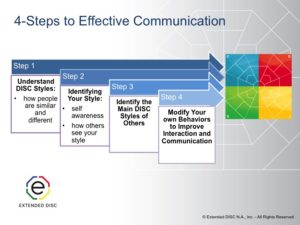 We build these 4 Steps to Effective Communication in our DISC reports, and training materials. Step 1 is to understand what D, I, S and C personality types mean. Step 2 is learning to identify your own DISC style. How would you increase self-awareness of how you prefer to behave or do things? In addition to self-awareness, learn how others see your behaviors. Step 3 is a strength of the DISC Model. Learn to identify the main DISC style of others. Lastly, Step 4 is to modify your own behaviors to improve interaction and communication.
We build these 4 Steps to Effective Communication in our DISC reports, and training materials. Step 1 is to understand what D, I, S and C personality types mean. Step 2 is learning to identify your own DISC style. How would you increase self-awareness of how you prefer to behave or do things? In addition to self-awareness, learn how others see your behaviors. Step 3 is a strength of the DISC Model. Learn to identify the main DISC style of others. Lastly, Step 4 is to modify your own behaviors to improve interaction and communication.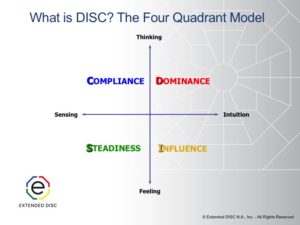 While 99% of us are a combination of DISC styles, we look at each of the 4 DISC styles in its 100% form to help us learn about them. The key things to remember before we go into each style is that no style is better or worse. We share similarities and we have differences between the DISC styles. We all have strengths and areas of development.
While 99% of us are a combination of DISC styles, we look at each of the 4 DISC styles in its 100% form to help us learn about them. The key things to remember before we go into each style is that no style is better or worse. We share similarities and we have differences between the DISC styles. We all have strengths and areas of development. The DISC Diamond model is a tool for observing and analyzing behaviors. A simple way to explain it is how we prefer to do things. The Diamond takes the DISC 4 Quadrant Model to the next level by creating sections of each quadrant to better identify a person’s DISC style.
The DISC Diamond model is a tool for observing and analyzing behaviors. A simple way to explain it is how we prefer to do things. The Diamond takes the DISC 4 Quadrant Model to the next level by creating sections of each quadrant to better identify a person’s DISC style. Step 2 is becoming more aware of our DISC behavioral style. This is a good place to provide your clients and employees with their Extended DISC Assessment now that they have a clearer understanding of what is DISC. DISC does not classify people into good or bad or better or worse. There are no right or wrong results, but the questions are forced-choice. Your DISC profile is based on self-evaluation. The results do not limit a person’s ability to develop in another direction or work environment. The test does not measure intelligence, skills, abilities or attitudes. The focus is strictly on how a person prefers to do things or his or her natural behavioral style.
Step 2 is becoming more aware of our DISC behavioral style. This is a good place to provide your clients and employees with their Extended DISC Assessment now that they have a clearer understanding of what is DISC. DISC does not classify people into good or bad or better or worse. There are no right or wrong results, but the questions are forced-choice. Your DISC profile is based on self-evaluation. The results do not limit a person’s ability to develop in another direction or work environment. The test does not measure intelligence, skills, abilities or attitudes. The focus is strictly on how a person prefers to do things or his or her natural behavioral style. Ultimately, what we are trying to develop is a strategic communication response. When we understand our natural style, how we prefer to behave and how we show up under pressure then we are able to proactively make effective adjustments.
Ultimately, what we are trying to develop is a strategic communication response. When we understand our natural style, how we prefer to behave and how we show up under pressure then we are able to proactively make effective adjustments.


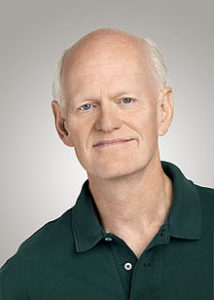
 Managing people stuff is hard. Some days I survived better than others as a new bank manager. This day was not one of them and life moved in slow motion. I was slumped at my desk with my office with door closed. Suddenly, I sensed I was being watched and looked up to find Katie standing outside my window. She stared directly at me and she was furious.
Managing people stuff is hard. Some days I survived better than others as a new bank manager. This day was not one of them and life moved in slow motion. I was slumped at my desk with my office with door closed. Suddenly, I sensed I was being watched and looked up to find Katie standing outside my window. She stared directly at me and she was furious. It was September 1995 in New Orleans, Louisiana. I worked at a bank located at the outskirts of Uptown. The famous New Orleans streetcar line ended right outside the bank. Tourists were our customers too. The rest were Tulane University students, small business owners, and locals. Frankly, the neighborhood was going downhill. I got to know New Orleans’s finest and the FBI because I dealt with fraud, robbery attempts, and even a drive-by shooting. My staff saw bullets holes in the windows, simply caulked with silicone, as a daily and unnerving reminder of the dangers we faced.
It was September 1995 in New Orleans, Louisiana. I worked at a bank located at the outskirts of Uptown. The famous New Orleans streetcar line ended right outside the bank. Tourists were our customers too. The rest were Tulane University students, small business owners, and locals. Frankly, the neighborhood was going downhill. I got to know New Orleans’s finest and the FBI because I dealt with fraud, robbery attempts, and even a drive-by shooting. My staff saw bullets holes in the windows, simply caulked with silicone, as a daily and unnerving reminder of the dangers we faced.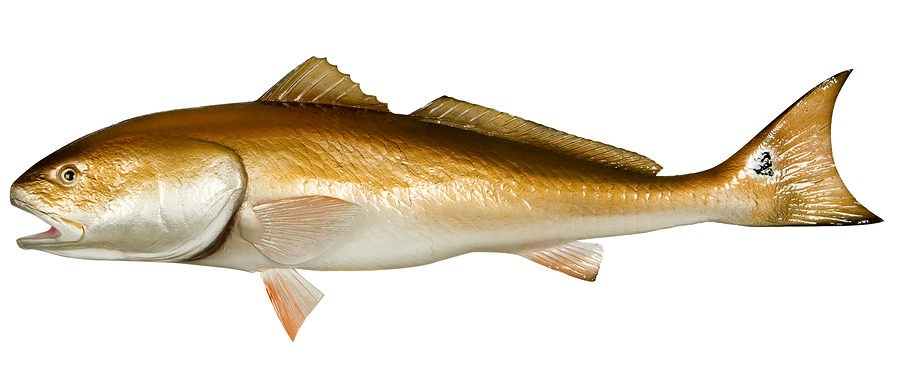 My friend Dave could make everyone laugh. Some did not appreciate his crude humor, but his delivery made up for his lack of tack. His laughter was contagious and he always had a great story to tell.
My friend Dave could make everyone laugh. Some did not appreciate his crude humor, but his delivery made up for his lack of tack. His laughter was contagious and he always had a great story to tell.